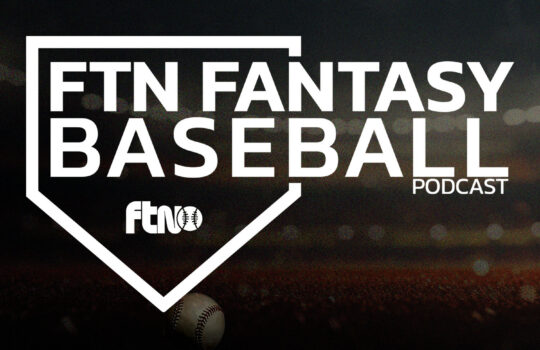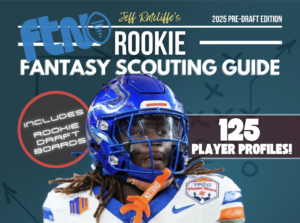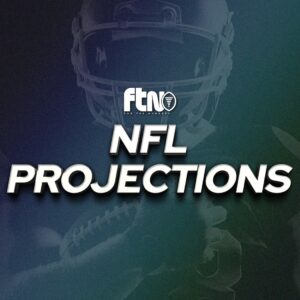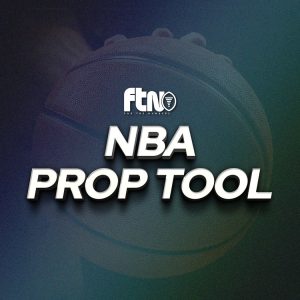
With the fantasy football season over, it is time for the most terrifying part of the season…
Seeing how much you got wrong.
It is a very important part of the process to see why things went a certain way for players over the course of the season and a great way for me to do just that is to revisit my Fantasy Crossroads series from the summer. Each article featured two players where I’d make an argument for and against both players, ultimately choosing one to draft in fantasy leagues. Today, we are going to see how those matchups played out during the 2022-23 season.
Davante Adams vs. Tyreek Hill
The Pick: Davante Adams
This was one of the most interesting matchups because it featured arguably the two best wide receivers in the NFL, both changing teams for the first time in their careers. I sided with Adams because I still expected a massive target share. We knew what we were going to get from Derek Carr at quarterback, while Tua Tagovailoa was still a bit of a mystery. I was also curious as to just how good a deep-ball passer Tagovailoa was. His 2021 numbers were impressive, ranking first among all qualified signal callers in completion percentage on deep passes (55.8%), though just 6.8% of his total attempts traveled 20-plus yards, a bottom-three rate in the league. But maybe I shouldn’t have even worried about it at all. Because opposing defenses played so much two-high safety against Kansas City last year, Hill finished 2021 with the lowest air yards per target (10.4), yards per reception (11.2) and yards per target (7.8) since his rookie campaign. During the first half of the season, Kansas City faced that style of defense on around 80% of their passing plays. This led to less massive plays from Hill but more targets, as he set a career-high in that department with 159. So while some may be worried about the drop-off in deep passing numbers with Hill in Miami, we need to understand that we already saw that drop-off last season and Hill still averaged 17.4 PPR points per game. But with Jaylen Waddle in Miami, I didn’t know just how much volume Hill would see, especially in what could have been a run-centric Miami offense with Mike McDaniel coming in. And while Adams obviously had a very good first season with the Raiders, I was clearly wrong here.
The Answer: Tyreek Hill

Tyreek Hill was incredible, hauling in the second-most passes (119) on the third-most targets (167) for 1,710 yards and seven touchdowns. He finished as the WR2 in fantasy, averaging 20.1 PPR points per game, just ahead of the WR3 Adams, who averaged 19.7 points per contest. Not only was I wrong about being considered with Hill’s volume, the All-Pro wideout led the entire league in targets per route run during his first season with the Dolphins (32%), while his 75 first-read targets were the third most in football. Hill saw double-digit targets in nine different contests, as Miami utilized Hill all over the field, especially in pre-snap motion, which the Dolphins used over 70% of the time, the highest rate in football. Mike McDaniel did a tremendous job of running his offense through the best players, obviously Hill and Waddle. The Dolphins transformed into a pass-first offense, ranking 10th in neutral-script pass rate at 59.2%. Miami made sure to manufacture touches for Hill, who ranked top-seven in both receptions (15) and targets (17) off screens on the year. Hill also led the league in air yards per route run (4.0), as Tagovailoa once again was efficient on the deep ball, ranking second among all passers with at least 100 pass attempts in deep completion rate (54.5%). Adams certainly wasn’t too far behind Hill, sporting a target per route run rate of 29% and averaging 3.5 air yards per route run, but Hill still outscored Adams despite scoring half as many touchdowns. It could have been an even more insane season from Hill if he saw more usage from in close, as his five end zone targets were tied for 50th among all wide receivers, while Adams ranked third with 16 such looks.
Javonte Williams vs. D’Andre Swift
The Pick: D’Andre Swift
This could have been a very fun matchup, but both running backs dealt with injuries, with Javonte Williams ultimately having his season cut short by a torn ACL. Entering the season, it would have been an interesting debate because both running backs were in committee backfields.
The Answer: D’Andre Swift
D’Andre Swift appeared to be on his way to a huge season. In Week 1, he had 18 touches for over 170 yards and a touchdown but dealt with ankle and shoulder injuries the rest of the way. The injuries limited him to just over nine touches per game from Week 3 on, while averaging just 40% of the snaps after returning from a three-game absence in Week 8. Of course, Williams suffered a torn ACL in Week 4, ending his season, but he was starting to take over the Broncos backfield — if he had stayed healthy, he likely would have cleared Swift.
Dalton Schultz vs. T.J. Hockenson
The Pick: Dalton Schultz
I was very high on Dalton Schultz entering the season. Already an integral part of the Dallas offense, Schultz was expected to be heavily involved again in 2022, especially with Amari Cooper in Cleveland. T.J. Hockenson has obviously shown flashes but hasn’t had strong, consistent fantasy totals alongside Amon-Ra St. Brown, an emerging star wideout.
The Answer: T.J. Hockenson
To start the season, both tight ends struggled. Schultz was injured and had Cooper Rush under center when he was healthy, which crushed his production. And while he was much better with Dak Prescott under center, averaging 4.18 more targets, 4.1 more receptions, 50.3 more receiving yards and 11 more fantasy points per game. However, a trade deadline move absolutely spiked Hockenson’s fantasy value, as he was traded to the Vikings and shined. From Week 9 (his Vikings debut), Hockenson was second among tight ends in receptions (60), second in targets (82), second in yards (519) and third in fantasy points.
Gabe Davis vs. Darnell Mooney
The Pick: Gabe Davis
One of the most polarizing players in fantasy this offseason, Gabe Davis was being drafted ahead of many talented wide receivers this summer, including Darnell Mooney. It was a debate between the clear No. 1 wideout in a run-first offense and a clear No. 2 in a pass-first offense.
The Answer: Gabe Davis
As expected, Davis had some huge games but also had a handful of disappearing acts throughout the season. He ranked seventh in the league in yards per reception (17.4) and aDOT (16.27 yards). Mooney had a slow start but picked it up in the middle of the season, having at least 50 yards in six of eight games in Weeks 4-11, ranking as the WR22 in fantasy during that span. Unfortunately, his season was cut short due to injury, as Mooney missed the final six games of the season.
Joe Burrow vs. Kyler Murray
The Pick: Joe Burrow
This was a close matchup, and it ultimately came down to the fact that Kyler Murray was going to be without DeAndre Hopkins for the first six games of the season. In five games with Hopkins out of the lineup during the 2021 campaign, Murray averaged just 15.5 fantasy points per game, while his passing yards per game dropped from 278.2 with Hopkins active to 227.6 without him.
The Answer: Joe Burrow

Joe Burrow was fantastic once again this season, finishing as the QB4 in fantasy with 35 passing touchdowns, nearly 4,500 passing yards and five rushing scores. Murray still averaged a solid 18.5 fantasy points per game but only played 11 games. When he was active, Arizona had zero semblance of a deep passing game, as Murray posted the league’s lowest completed air yards per completion (4.3) and completed air yards per pass attempt (2.9).
Diontae Johnson vs. Michael Pittman
The Pick: Michael Pittman
Volume was expected to be on both wideouts’ sides this season, as Diontae Johnson and Michael Pittman entered the year as the clear lead receivers, though both players were playing alongside new quarterbacks. In 2021, Johnson saw 170 targets, the second most in football, and he was the first read on a whopping 147 of those looks, tied for the third most in the league. And back in 2020, only Allen Robinson saw more first-read targets than Johnson’s 112. Meanwhile, Pittman was the clear top target in the Colts passing game, as he saw 129 targets, 16th in the NFL. He was so clearly ahead of every other pass-catcher on this team that Pittman was responsible for a whopping 27% of Indianapolis’ total receptions this past season. Only two players in all of football sported a higher percentage of team’s receptions – Cooper Kupp (35%) and Davante Adams (30%).
The Answer: Michael Pittman
It really came down to touchdowns. Johnson finished the season with the sixth-most targets among all wide receivers (141) but failed to find the end zone, while Pittman finished right behind him with 139 targets but scored four times. Both wideouts failed to see many looks down the field and presented minimal upside, as Pittman finished with the fewest deep targets among qualified receivers this season (7).
Saquon Barkley vs. David Montgomery
The Pick: Saquon Barkley
When writing this article, David Montgomery and Saquon Barkley were actually being drafted close to each other. Of course, as the summer went on, Barkley climbed to the front of the second/end of the first round in fantasy drafts. Regardless, it wasn’t close for me, as I was so insanely high on Barkley entering the season.
The Answer: Saquon Barkley
This was obviously a runaway, as Barkley was the RB5 in fantasy, averaging 22 touches per game. His 80% opportunity share ranked third among all running backs, while Montgomery started to split some work with Khalil Herbert when both running backs were healthy.
Derek Carr vs. Kirk Cousins
The Pick: Derek Carr
Derek Carr and Kirk Cousins were being drafted as back-end QB1 options this season, and while Cousins has proven how safe he is, I leaned toward Carr due to the addition of Davante Adams. In 2021-22, Carr ranked just 19th in red zone completion rate (55.8%), while his 51.4% completion rate from inside the 10-yard line was 27th in football. I thought the addition of Adams would greatly improve Carr’s red zone efficiency, which was the only thing holding him back, as his 3.7% touchdown rate was insanely low in 2021.
The Answer: Kirk Cousins

Kirk Cousins won this matchup pretty comfortably, as he was the QB8 in fantasy, his highest finish since 2016. It didn’t help that Carr was missing both Darren Waller and Hunter Renfrow for a big chunk of the season, while Minnesota’s awful defense forced Cousins to throw the ball quite a bit. The Raiders, on the other hand, leaned heavily on Josh Jacobs this past season.
George Kittle vs. Darren Waller
The Pick: Darren Waller
If George Kittle were in an offense that utilized him more consistently, this wouldn’t even be a discussion, and he’d be right up there with Travis Kelce. But because he is asked to run-block in an offense that ranked fourth in neutral script rush rate last season (48.3%), Kittle actually only ranked 18th among all tight ends in routes run (389). Meanwhile, only the Titans’ Geoff Swaim recorded more run-blocking snaps at the position than Kittle (365). There are questions whether Kittle can reach Kelce and Mark Andrews in terms of fantasy production and in more of a pass-first offense, he sure can. However, for reference, Andrews averaged over 17 more routes per game than Kittle last season, a number that is by no means insignificant. Meanwhile, Kittle only averaged 6.7 targets per game last season, as he competed with Deebo Samuel and Brandon Aiyuk for targets in a run-first offense. Pair all of that with a new quarterback situation in San Francisco, Darren Waller was my selection.
The Answer: George Kittle
Waller struggled to stay healthy this season, as a hamstring injury limited him to just nine games. Kittle, meanwhile, had a few of those games where he disappeared and wasn’t a huge part of the offense but was unstoppable down the stretch, scoring nine touchdowns from Week 11 on, while posting 425 yards (second) and 31 receptions (fourth) during that span.
Dalvin Cook vs. Joe Mixon
The Pick: Dalvin Cook
This was a tough matchup between two running backs with huge workloads. I leaned toward Dalvin Cook because I expected massive touchdown regression, while Mixon’s usage in the passing game had been very inconsistent. On his 12 rushing attempts from inside the 5-yard line last season, Cook only scored three touchdowns, scoring four touchdowns on 26 carries from inside the 10-yard line, obviously a step back from his 2020 campaign where he converted eight of his league-leading 22 carries from inside the five into touchdowns. Cook still finished sixth among all running backs in inside the five carries (12) and fourth in inside-the-10 carries (26). Mixon ranked 25th among running backs with a 9.4% target share, and per the FTN Data team, Mixon only played on 78-of-286 third downs last season, while also playing on just 28-of-181 snaps when the Bengals faced third-and-5 or longer.
The Answer: Dalvin Cook
Cook ended up scoring just seven more fantasy points than Mixon this season, though he also played three more games. Mixon started the season catching a ton of passes, as opposing defenses played a ton of Cover-2 against the Bengals to eliminate the explosive plays in the passing game. Cook, meanwhile, didn’t have the greatest efficiency but scored 10 total touchdowns on the year.
Terry McLaurin vs. DJ Moore
The Pick: DJ Moore
This was one of the closest debates of the season for me. It ultimately came down to the fact that DJ Moore has less target competition in Carolina than Terry McLaurin in Washington. Moore’s 143 first-read targets in 2021 were the fifth-most in the league and Carolina really only had (at the time) Christian McCaffrey to take looks away. McLaurin was playing alongside Jahan Dotson and Curtis Samuel.
The Answer: Terry McLaurin
I was pretty excited about the thought of Moore playing alongside Baker Mayfield, and I thought it could have been a career season. However, Mayfield and the Carolina passing game were atrocious to start the season and Moore really didn’t get going until Sam Darnold took over. Both wideouts had pretty glaring splits alongside certain quarterbacks, as McLaurin had his best outings with Taylor Heinicke under center. But Washington’s decision to go with Heinicke ended up helping McLaurin, who averaged eight targets, 5.5 receptions, 80.5 receiving yards and 15.6 PPR points per game in nine contests with Heinicke under center, compared to 5.8 targets, 3.5 receptions, 58.6 receiving yards and 11.2 PPR points per game alongside Carson Wentz.
Mike Gesicki vs. Cole Kmet
The Pick: Cole Kmet
I really didn’t understand why Mike Gesicki was being selected as high as he was. Cole Kmet was the easy choice for me, as he was in line for a hefty target share after already seeing one in 2021, and with Jimmy Graham gone, I expected more usage in the red zone. Chicago used Graham as a red zone target, as his six end zone targets from a season ago were good for 13th among tight ends, while over 27% of his targets came in the end zone, the highest rate at the position.
The Answer: Cole Kmet

Kmet had a crazy hot stretch in Weeks 8-10 where he scored five touchdowns. But even without that run, he still would have easily surpassed Gesicki, who was hardly a part of Miami’s offense, which is something that was easy to see coming during the preseason.
Justin Jefferson vs. Cooper Kupp
The Pick: Justin Jefferson
Justin Jefferson was my WR1 entering the season because he is really, really good at football and he’d now be playing in the same system Cooper Kupp played in during his historic 2021 campaign. It was really that simple. And with an uptick in passing volume on the horizon for Minnesota, I was just so excited about Jefferson’s potential.
The Answer: Justin Jefferson
Kupp unfortunately missed most of the season with an injury, while Jefferson flirted with 2,000 yards. It would have been interesting to see how close this would have been if both Kupp and Matthew Stafford were fully healthy for the entire year.
Justin Herbert vs. Patrick Mahomes
The Pick: Justin Herbert
While I really wasn’t all that concerned with Patrick Mahomes entering the season, I chose Justin Herbert simply because I didn’t think we had seen anywhere close to his ceiling quite yet. And perhaps the loss of Tyreek Hill was enough for me to (foolishly) give Herbert the edge.
The Answer: Patrick Mahomes
He’s the best player in football. Over 5,200 yards, 41 touchdowns and four rushing scores, Mahomes is set to win his second MVP, while Herbert underwhelmed for fantasy. Granted, he was missing his top two receivers for much of the season, but Joe Lombardi’s offense offered zero upside.
Travis Etienne vs. Breece Hall
The Pick: Breece Hall
Coming into the season, Breece Hall was expected to share work with Michael Carter, while Travis Etienne would share the Jacksonville backfield with James Robinson. I thought Hall had a better chance of seeing more consistent usage in the passing game, but especially at the goal line, and I thought he could do it faster.
The Answer: Travis Etienne

Unfortunately, injury once again played a factor, as Hall — who was just starting to become an every-down back — tore his ACL in Week 7, ending what was shaping up to be a stellar rookie season. This injury determined this entire matchup, as the Jets then traded for James Robinson, paving the way for Etienne to play over 80% of the snaps and see 20-plus touches the rest of the season.
Tom Brady vs. Russell Wilson
The Pick: Tom Brady
Between the unknown with Russell Wilson and his new team and the fact that Tom Brady’s volume in this Tampa Bay offense was so secure, I didn’t get cute here. I went with the Hall of Fame signal caller who attempted the second-most regular season passes in the history of football in 2021 (719). No team sported a higher pass rate in neutral gamescripts than the Bucs (67%), while they still ranked second in passing rate when up by eight or more points (55.5%). It doesn’t matter if Tampa Bay was ahead by three scores in the fourth quarter, Brady and company were dropping back to pass more often than not. Only the Chiefs and Bills called pass more times on first down than the Bucs last season (312), while Brady attempted at least 40 passes in 11 different contests.
The Answer: Tom Brady
Wilson’s first season with the Broncos was a nightmare, and while Brady and the Bucs’ season wasn’t exactly a walk in the park, it would have been difficult for him to play worse than Wilson did in that Denver offense.












































 New York Jets
New York Jets  New England Patriots
New England Patriots  Miami Dolphins
Miami Dolphins  Buffalo Bills
Buffalo Bills  Pittsburgh Steelers
Pittsburgh Steelers  Cleveland Browns
Cleveland Browns  Cincinnati Bengals
Cincinnati Bengals  Baltimore Ravens
Baltimore Ravens  Tennessee Titans
Tennessee Titans  Jacksonville Jaguars
Jacksonville Jaguars  Indianapolis Colts
Indianapolis Colts  Houston Texans
Houston Texans  Las Vegas Raiders
Las Vegas Raiders  Los Angeles Chargers
Los Angeles Chargers  Kansas City Chiefs
Kansas City Chiefs  Denver Broncos
Denver Broncos  Washington Commanders
Washington Commanders  Philadelphia Eagles
Philadelphia Eagles  New York Giants
New York Giants  Dallas Cowboys
Dallas Cowboys  Minnesota Vikings
Minnesota Vikings  Green Bay Packers
Green Bay Packers  Detroit Lions
Detroit Lions  Chicago Bears
Chicago Bears  Tampa Bay Buccaneers
Tampa Bay Buccaneers  New Orleans Saints
New Orleans Saints  Carolina Panthers
Carolina Panthers  Atlanta Falcons
Atlanta Falcons  San Francisco 49ers
San Francisco 49ers  Seattle Seahawks
Seattle Seahawks  Los Angeles Rams
Los Angeles Rams  Arizona Cardinals
Arizona Cardinals 








 Boston Celtics
Boston Celtics  Brooklyn Nets
Brooklyn Nets  Philadelphia 76ers
Philadelphia 76ers  New York Knicks
New York Knicks  Toronto Raptors
Toronto Raptors  Chicago Bulls
Chicago Bulls  Detroit Pistons
Detroit Pistons  Milwaukee Bucks
Milwaukee Bucks  Cleveland Cavaliers
Cleveland Cavaliers  Indiana Pacers
Indiana Pacers  Orlando Magic
Orlando Magic  Atlanta Hawks
Atlanta Hawks  Charlotte Hornets
Charlotte Hornets  Miami Heat
Miami Heat  Washington Wizards
Washington Wizards  Denver Nuggets
Denver Nuggets  Minnesota Timberwolves
Minnesota Timberwolves  Oklahoma City Thunder
Oklahoma City Thunder  Portland Trail Blazers
Portland Trail Blazers  Utah Jazz
Utah Jazz  LA Clippers
LA Clippers  Golden State Warriors
Golden State Warriors  Los Angeles Lakers
Los Angeles Lakers  Phoenix Suns
Phoenix Suns  Sacramento Kings
Sacramento Kings  Dallas Mavericks
Dallas Mavericks  Houston Rockets
Houston Rockets  Memphis Grizzlies
Memphis Grizzlies  New Orleans Pelicans
New Orleans Pelicans  San Antonio Spurs
San Antonio Spurs 











